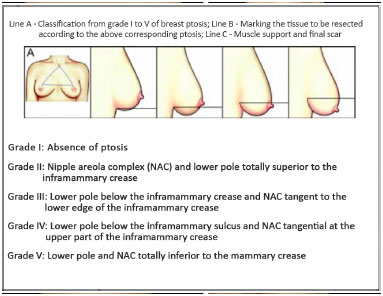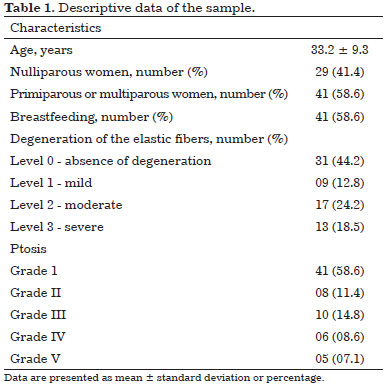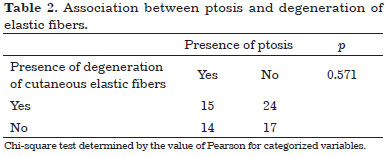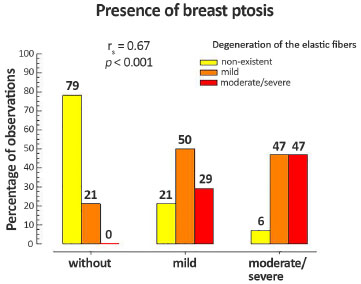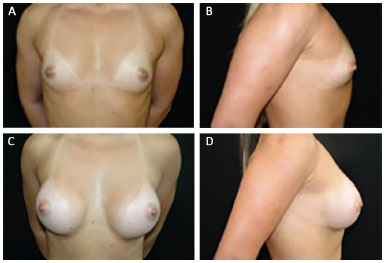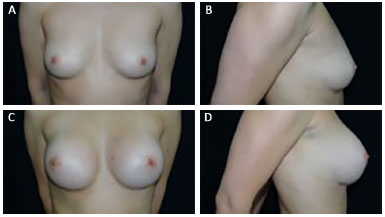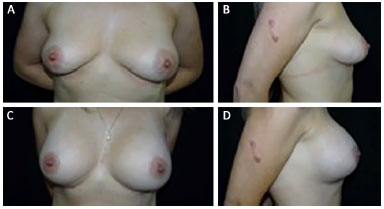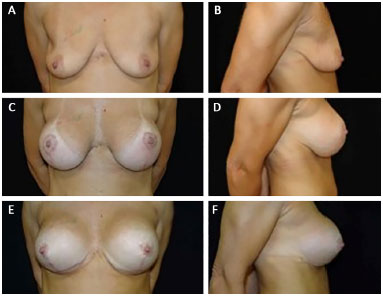ABSTRACT
INTRODUCTION: Different techniques and approaches have already been described for the introduction of breast implants. However, these same studies do not take into account the nature of the cutaneous properties and its consequences. The presence of ptosis and degeneration of the elastic fibers can interfere in the contractility, elasticity, resilience of the skin and, consequently, the outcome of implant surgery for breast augmentation.
METHODS: A cross-sectional retrospective study was performed, with evaluation of the medical records of patients undergoing breast augmentation implant procedure from April 2011 to April 2013. Data on the degree of degeneration of the elastic fibers and breast ptosis were collected and a p value of 0.05 was considered for all statistical analyses.
RESULTS: Of the 70 eligible patients, the mean age was 33.2 ± 9.3 years. An absence of degeneration of the elastic fibers was present in 44.2% of the sample. A prevalence of 12.8%, 24.4% and 18.5% was found for level 1 (mild), 2 (moderate) and 3 (severe) ptosis, respectively. The correlation between ptosis and the degeneration of the elastic fibers was r = 0.67, p < 0.001.
CONCLUSIONS: The study of the elements of breast ptosis and cutaneous elastic fibers enabled the evaluation of their varying degrees of presentation. Prospective studies are suggested for a better understanding of the causal relationship between the degeneration of the elastic fibers and breast ptosis.
Keywords: Breast; Elastic fibers; Reconstructive surgical procedures; Breast implant.


